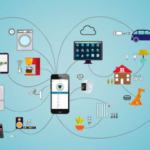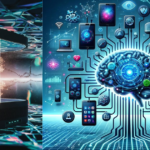Classical computing has come a long way since the first electronic computer was built in the 1940s. Today, we have powerful machines that can process vast amounts of data, connect us with people worldwide, and even beat us at complex games like chess and Go. However, classical computers are limited by their fundamental architecture, which is based on bits that can only exist in two states: 0 or 1.
This is where quantum computing comes in – a revolutionary technology that’s poised to change the game. Quantum computing has the potential to solve complex problems that are currently unsolvable or require an unfeasible amount of time to solve classically. This technology has far-reaching implications for fields like cryptography, drug discovery, optimization, and artificial intelligence.
In this post, we’ll delve into the basics of quantum computing, exploring what it is, how it differs from classical computing, and the principles that make it so powerful.
What is Quantum Computing?
Quantum computing is a new paradigm for computing that uses the principles of quantum mechanics to perform calculations and operations on data. At its core, quantum computing is based on the idea that quantum objects, such as atoms and subatomic particles, can exist in multiple states simultaneously.
How it differs from classical computing
Classical computing uses bits to store and process information, which can only be in one of two states: 0 or 1. Quantum computing, on the other hand, uses quantum bits or qubits, which can exist in multiple states simultaneously. This property, known as superposition, allows quantum computers to process vast amounts of data much faster than classical computers.
Quantum Mechanics Basics
Quantum computing relies on the principles of quantum mechanics, a branch of physics that studies the behavior of matter and energy at an atomic and subatomic level. To understand quantum computing, it’s essential to grasp some fundamental concepts of quantum mechanics.
Wave-Particle Duality
One of the most mind-bending principles of quantum mechanics is wave-particle duality. This concept suggests that particles, such as electrons or photons, can exhibit both wave-like and particle-like behavior depending on how they’re observed.
- In some experiments, particles behave like waves, displaying characteristics like diffraction and interference.
- In other experiments, the same particles behave like particles, displaying characteristics like definite position and momentum.
Quantum Computing Hardware
Quantum computing hardware is the physical component that enables quantum computing. There are various types of quantum computing hardware, each with its own strengths and weaknesses.
Quantum Processors and Gates
Quantum processors are the quantum equivalent of classical CPUs. They consist of quantum gates, which are the quantum equivalent of logic gates.
- Quantum gates perform operations on qubits, such as entanglement, rotation, and measurement.
- Quantum processors can be combined to form larger quantum systems, enabling more complex calculations.
Types of Quantum Computing Hardware
- Superconducting Quantum Computing: Uses superconducting materials to create qubits that can exist in multiple states simultaneously.
- Ion Trap Quantum Computing: Uses electromagnetic fields to trap ions, which are used as qubits.
- Quantum Annealing: Uses a process called annealing to find the optimal solution for a problem.
Quantum Algorithms and Applications
Quantum algorithms are the programs that run on quantum computers, taking advantage of the unique properties of qubits to solve specific problems.
Quantum Algorithms
- Shor’s Algorithm: A quantum algorithm for factoring large numbers, which has significant implications for cryptography.
- Grover’s Algorithm: A quantum algorithm for searching an unsorted database, which is faster than classical algorithms.
Quantum Computing Applications
- Cryptography: Quantum computers can break many classical encryption algorithms, but they can also be used to create new, quantum-resistant encryption methods.
- Optimization: Quantum computers can be used to optimize complex systems, such as logistics or finance.
- Simulation: Quantum computers can simulate complex systems, such as molecules or chemical reactions.
Quantum Computing Challenges and Limitations
While quantum computing has the potential to revolutionize various fields, it’s not without its challenges and limitations. Let’s dive into some of the key hurdles researchers and developers are facing.
Challenges
- Error Correction: Quantum computers are prone to errors due to the fragile nature of qubits. Developing robust error correction methods is an active area of research.
- Scalability: Currently, most quantum computers are small-scale and can’t handle complex tasks. Scaling up to larger systems while maintaining control and low error rates is a significant challenge.
- Quantum Control: Maintaining control over qubits as they interact with their environment is essential. Losing control leads to errors and reduced computational power.
Limitations
- Noise: Quantum computers are sensitive to noise, which can cause errors and reduce computational power.
- Interference: Qubits can interfere with each other, leading to errors and reduced computational power.
- Quantum Decoherence: Qubits can lose their quantum properties due to interactions with the environment, reducing computational power.
Conclusion
In conclusion, our journey through the realm of quantum computing has unveiled the mysteries of this revolutionary technology. We’ve delved into the fundamentals of classical computing, the principles of quantum mechanics, and the basics of quantum computing. We’ve explored the hardware and software that make quantum computing possible, and the algorithms and applications that are driving innovation. We’ve also discussed the challenges and limitations of quantum computing, and the ongoing research to overcome them. As we conclude this odyssey, remember that quantum computing is not just a technology, but a gateway to new possibilities.



